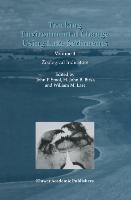- Start
- Tracking Environmental Change Using Lake Sediments
Tracking Environmental Change Using Lake Sediments
Angebote / Angebote:
Paleolimnology is a rapidly developing science that is now being used to study a suite of environmental and ecological problems. This volume is the fourth handbook in the Developments in Paleoenvironmental Research book series. The first volume (Last & Smol, 2001a) examined the acquisition and archiving of sediment cores, chronological techniques, and large-scale basin analysis methods. Volume 2 (Last & Smol, 2001b) focused on physical and chemical methods. Volume 3 (Smol et al. , 2001), along with this book, summarize the many biological methods and techniques that are available to study long-term environmental changeusing information preserved in sedimentary profiles. A subsequent volume (Birks et al. , in preparation) will deal with statistical and data handling procedures. It is our intent that these books will provide sufficient detail and breadth to be useful handbooks for both seasoned practitioners as well as newcomers to the area of paleolimnology. These books will also hopefully be useful to non-paleolimnologists (e. g. , limnologists, archeologists, palynologists, geographers, geologists, etc. ) who continue to hear and read about pal- limnology, but have little chance to explore the vast and sometimes difficult to access journal-based reference material for this rapidly expanding field. Although the chapters in these volumes target mainly lacustrine settings, many of the techniques described can also be readily applied to fluvial, glacial, marine, estuarine, and peatland environments. This current volume focuses on zoological indicators preserved in lake sediments, whilst Volume 3 focused on terrestrial, algal, and siliceous indicators.
Folgt in ca. 5 Arbeitstagen




